As you prepare for a day at the rodeo, start by selecting a sturdy cooler to keep your lunch fresh and drinks cold. Pack plenty of ice packs to ensure everything stays chilled throughout the day. For a hearty meal, consider making sandwiches with your choice of deli meats, cheeses, and fresh veggies, wrapped tightly in parchment paper for easy access. Add some crunchy snacks like tortilla chips and salsa or fresh-cut veggies with hummus for dipping.
The Essentials To Bring
- Comfortable Clothing: Wear weather-appropriate clothes, ideally layers, along with sturdy footwear like boots or sneakers.
- Hat and Sunglasses: A wide-brimmed hat will shield you from the sun, and sunglasses will protect your eyes.
- Sunscreen: Apply and bring extra for reapplication throughout the day.
- Seating: A portable chair or blanket can enhance your comfort while watching the events.
- Cooler with Lunch and Snacks: Pack a cooler with sandwiches, fruits, snacks, and plenty of water to stay refreshed. A cheap cooler will do the trick as most rodeos are evening events and typically only last for a few hours.
- Camera or Smartphone: Capture the exciting moments, but don’t forget to enjoy the live experience!
- Ear Protection: Consider earplugs or noise-canceling headphones if you’re sensitive to loud noises.
- Cash: Some vendors may only accept cash, so bring some for concessions or merchandise.
- Rain Gear: Check the forecast and pack a poncho or umbrella if rain is in the cards.
- Hand Sanitizer or Wipes: Useful for quick clean-ups, especially after eating.
- Program or Schedule: Grab a program to keep track of the events and riders.
What To Expect
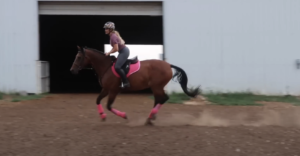 As a spectator at a rodeo, you can expect a vibrant atmosphere filled with excitement and tradition. The event typically starts with a lively opening ceremony, often featuring music, flag presentations, and sometimes a national anthem.
As a spectator at a rodeo, you can expect a vibrant atmosphere filled with excitement and tradition. The event typically starts with a lively opening ceremony, often featuring music, flag presentations, and sometimes a national anthem.
Throughout the day, you’ll witness a variety of thrilling competitions, such as bull riding, barrel racing, roping, and steer wrestling. Each event showcases the skills of both the riders and their animals, often with a backdrop of enthusiastic commentary that explains the rules and adds to the excitement.
The Excitement Of Rodeo
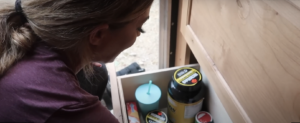 The energy in the crowd is infectious, with cheers and applause for the participants. You’ll likely see families enjoying the day together, vendors selling food, drinks, and rodeo merchandise, and perhaps even some live music or entertainment during breaks.
The energy in the crowd is infectious, with cheers and applause for the participants. You’ll likely see families enjoying the day together, vendors selling food, drinks, and rodeo merchandise, and perhaps even some live music or entertainment during breaks.
Prepare for some downtime between events, which is a great opportunity to explore the grounds, enjoy your packed lunch or snacks, and soak in the festive atmosphere. Just be ready for the unexpected—rodeo events can be unpredictable, keeping you on the edge of your seat! Overall, it’s a fun and lively experience that celebrates cowboy culture and community spirit.
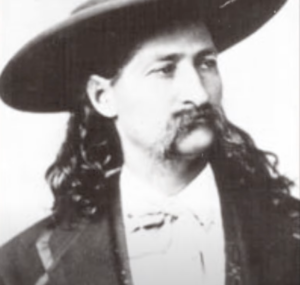 Historically, rodeo hats have been crafted with meticulous care and attention to detail. High-quality materials, such as beaver felt, are often used to create these hats, ensuring durability and a stylish appearance. The designs frequently feature intricate embellishments, such as custom hatbands, feathers, and even personal insignia, making each hat unique to its wearer. Notable rodeo legends, like the famous bull riders and ropers, have made their mark with these distinctive hats, often turning them into prized memorabilia.
Historically, rodeo hats have been crafted with meticulous care and attention to detail. High-quality materials, such as beaver felt, are often used to create these hats, ensuring durability and a stylish appearance. The designs frequently feature intricate embellishments, such as custom hatbands, feathers, and even personal insignia, making each hat unique to its wearer. Notable rodeo legends, like the famous bull riders and ropers, have made their mark with these distinctive hats, often turning them into prized memorabilia.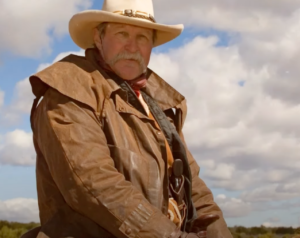 Another prominent style is the Cattleman hat, known for its smooth, rounded crown and a brim that is slightly turned up at the back. This design is particularly favored in traditional rodeo settings and by those who appreciate a more polished, classic look. The Cattleman’s brim is typically around 4 inches wide, offering excellent coverage while maintaining a refined appearance.
Another prominent style is the Cattleman hat, known for its smooth, rounded crown and a brim that is slightly turned up at the back. This design is particularly favored in traditional rodeo settings and by those who appreciate a more polished, classic look. The Cattleman’s brim is typically around 4 inches wide, offering excellent coverage while maintaining a refined appearance.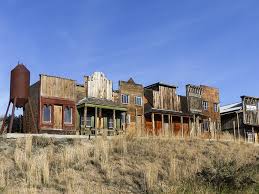 Tourism is alive an well in every part of the world. We all set out to explore the world around ourselves. Seeing natural wonders, visiting man-made attractions, and of course-exploring everything that is related to our world’s history. It is partially curiosity and possibly a desire to keep learning all the mysteries of the world. At least, as much as we can learn anyway. Perhaps this is the reason for our unending fascination with the old west. It is also what has spawned a new era. The one involving tiny house villages of the western world, which combines old history with new tiny house living.
Tourism is alive an well in every part of the world. We all set out to explore the world around ourselves. Seeing natural wonders, visiting man-made attractions, and of course-exploring everything that is related to our world’s history. It is partially curiosity and possibly a desire to keep learning all the mysteries of the world. At least, as much as we can learn anyway. Perhaps this is the reason for our unending fascination with the old west. It is also what has spawned a new era. The one involving tiny house villages of the western world, which combines old history with new tiny house living.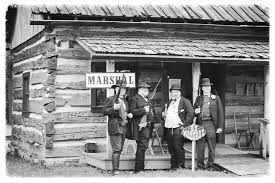 When we think of the old west, we think of cowboys, Indians, gun fights at the OK Corral, etc. We picture in our mind saloons and swinging doors.
When we think of the old west, we think of cowboys, Indians, gun fights at the OK Corral, etc. We picture in our mind saloons and swinging doors.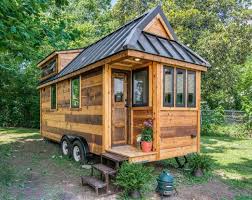 The glory of the west has faded some, but that doesn’t mean we cannot still experience the rustic ways of that time. The old ways can mix with newer technology. To see it in action, you can visit areas like the
The glory of the west has faded some, but that doesn’t mean we cannot still experience the rustic ways of that time. The old ways can mix with newer technology. To see it in action, you can visit areas like the 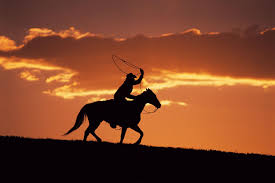 Once upon a time, soon after the civil war and establishing the western U.S. as a territory that had to be tamed, cowboys got their start. We aren’t talking about the typical cowboys you see in Hollywood movies. We are talking about the men who stood up for what they believed in (a good day’s work herding cattle) and tamed the west while they were at it. We are talking about the Doc Holiday, Wyatt Earp, good guy, bad guy, type cowboys only with a little twist.
Once upon a time, soon after the civil war and establishing the western U.S. as a territory that had to be tamed, cowboys got their start. We aren’t talking about the typical cowboys you see in Hollywood movies. We are talking about the men who stood up for what they believed in (a good day’s work herding cattle) and tamed the west while they were at it. We are talking about the Doc Holiday, Wyatt Earp, good guy, bad guy, type cowboys only with a little twist.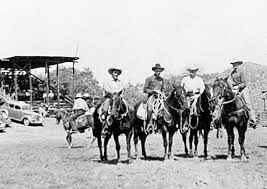 The “cowboy” was a group of people who would herd cattle to the northern territories where beef was a commodity. There would typically be 6-8 men riding in a group to get roughly 3,000 cattle at one time to railroad depots or up north where it could be sold for as much as $40 per cow. It was a rough life. The cattle would be branded to show which farm owned it and occasionally conflicts did come up. It was a way of life that was rough, a fact which was proven in 1886-1887 when an exceptionally cold winter killed most cattle.
The “cowboy” was a group of people who would herd cattle to the northern territories where beef was a commodity. There would typically be 6-8 men riding in a group to get roughly 3,000 cattle at one time to railroad depots or up north where it could be sold for as much as $40 per cow. It was a rough life. The cattle would be branded to show which farm owned it and occasionally conflicts did come up. It was a way of life that was rough, a fact which was proven in 1886-1887 when an exceptionally cold winter killed most cattle.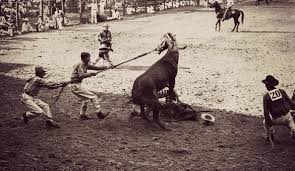 After the big freeze, the “cowboy era” was slowed drastically. Fewer cattle would be moved at one time. Feuds over property lines meant that farmers turned to barbed wire to protect what was there. Some cowboys turned to a more “lawless” existence while others simply wanted to work with cattle on a private farm where an average workday would last about 15 hours a day.
After the big freeze, the “cowboy era” was slowed drastically. Fewer cattle would be moved at one time. Feuds over property lines meant that farmers turned to barbed wire to protect what was there. Some cowboys turned to a more “lawless” existence while others simply wanted to work with cattle on a private farm where an average workday would last about 15 hours a day.